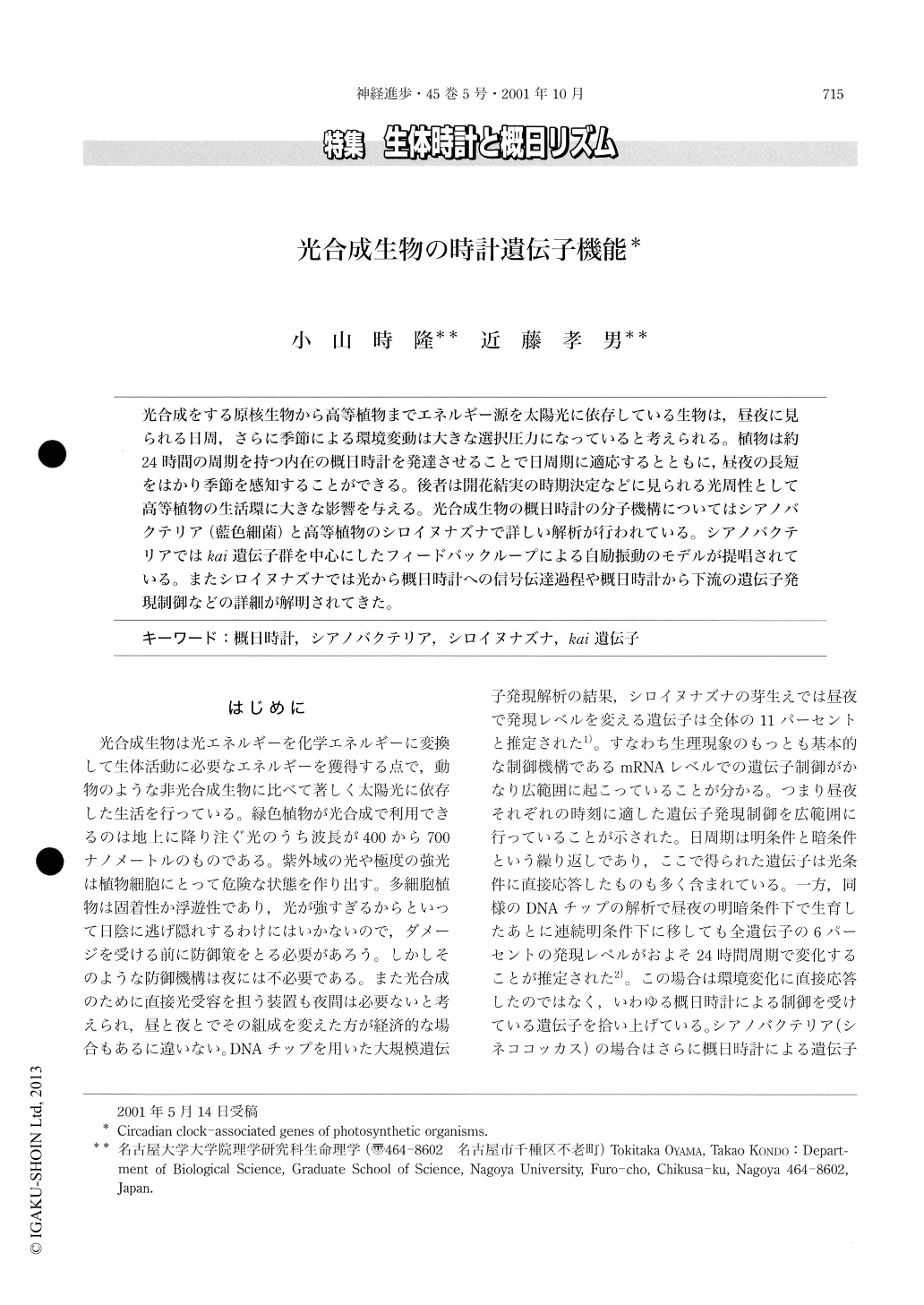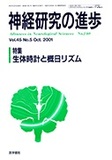Japanese
English
- 有料閲覧
- Abstract 文献概要
- 1ページ目 Look Inside
光合成をする原核生物から高等植物までエネルギー源を太陽光に依存している生物は,昼夜に見られる日周,さらに季節による環境変動は大きな選択圧力になっていると考えられる。植物は約24時間の周期を持っ内在の概日時計を発達させることで日周期に適応するとともに,昼夜の長短をはかり季節を感知することができる。後者は開花結実の時期決定などに見られる光周性として高等植物の生活環に大きな影響を与える。光合成生物の概日時計の分子機構についてはシアノバクテリア(藍色細菌)と高等植物のシロイヌナズナで詳しい解析が行われている。シアノバクテリアではkai遺伝子群を中心にしたフィードバックループによる自励振動のモデルが提唱されている。またシロイヌナズナでは光から概日時計への信号伝達過程や概日時計から下流の遺伝子発現制御などの詳細が解明されてきた。
Photosynthetic organisms are totally dependent upon sunlight for their energy Adaptation to the day/night cy-cle must have been of great advantage to competition for life. Plants have developed the endogenous clock with a period of about 24 hours. This circadian clock not only generates the daily rhythmic phenomena but also works to measure the daylight length for the seasonal information. The latter mechanism called photoperiodism, affects tim-ing of life cycle like flower development in many plant species. Among photosynthetic organisms, a cyanobacte-rium, Synechococcus sp. PCC7942, and a higher plant, Arabidopsis thaliana, are best analyzed for molecular mecha-nisms of the clockwork. The kai genes in the Synechococcus are shown to be essential for the oscillation of the cir-cadian rhythm. The transcription/translation-based feedback oscillator of the kai genes is proposed as a clock model. Molecular studies on the Arabidopsis circadian clock have revealed a lot of genes involved in signaling path-ways from light receptors to the oscillator and then to the downstream gene expression.

Copyright © 2001, Igaku-Shoin Ltd. All rights reserved.


